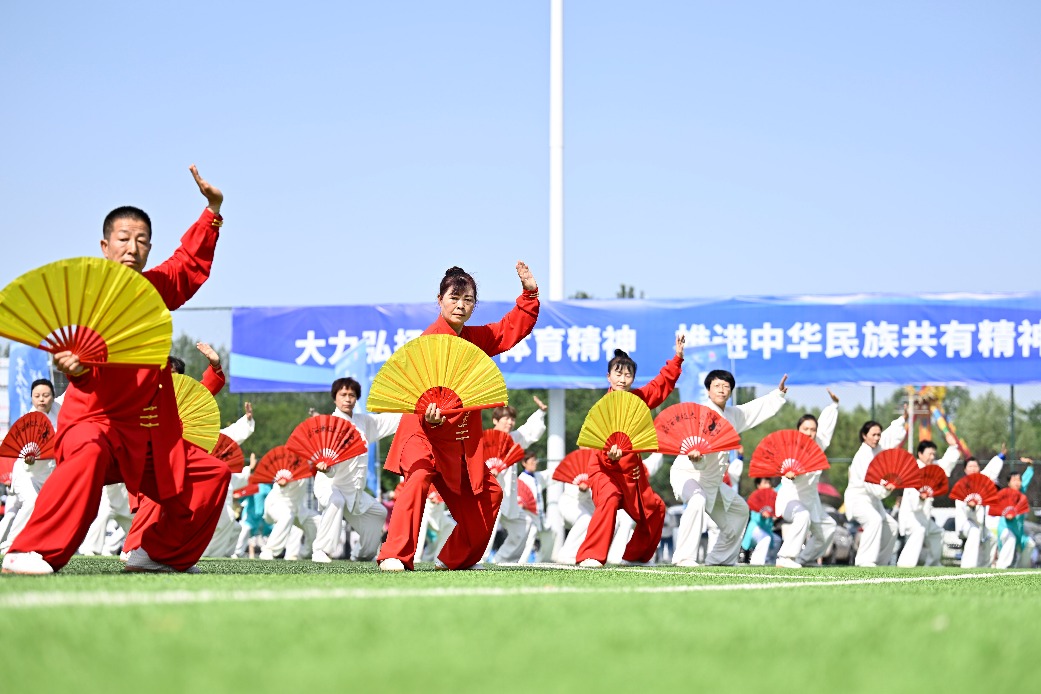From AI model races to practical breakthroughs


In the AI realm in China, the chaotic "model wars" which once saw hundreds of large language models (LLMs) vying for attention have given way to a more consolidated, mature ecosystem. Six major players — Alibaba, DeepSeek, Byte-Dance, Tencent, StepFun and Zhipu AI — now dominate the AI field, and their focus has shifted from "will it work?" to "will it work well?"
This change signals not only a technological transformation but also a strategic shift. China's AI sector is no longer content with scaling models; it is now scaling utility. The four core trends shaping China's AI trajectory in 2025 highlight the country's move beyond theoretical potential to practical, world-changing applications.
Forget the chatbots of yesteryear. The future of China's artificial intelligence sector is all about AI agents — AI systems that plan, execute and deliver. These are not just tools of conversation, but also virtual employees in the digital world. One prominent example is Manus, a Chinese general-purpose agent making waves because of its ability to plan trips, code websites, and give presentations, the outcome is clear: AI is getting things done.
AI agents are replacing apps as the new interface. Rather than toggling between dozens of programs, users are increasingly relying on a single AI interface that delegates tasks, retrieves data and adapts to context. Chinese tech giants like ByteDance and Baidu are making huge investments into this ecosystem to stake early claims on what could be the next great traffic distribution hub.
AI is no longer about lines of code, it is also about machines that can see, move and act. Also, embodied AI — intelligence built into physical forms — is gaining ground in China at a much faster pace than forecast. For example, smart driving has reached a tipping point, with BYD equipping entry-level cars with high-level autonomous driving features.
Besides, humanoid robots are no longer a novelty, but a necessity in structured industrial settings. They're assembling car parts, moving inventory and taking the first steps toward broader commercial viability. China's robust manufacturing ecosystem and rapidly developing innovation cycles give its firms a potential edge, especially as countries look to diversify global supply chains.
Even AI glasses, previously considered a fringe concept, are getting a second life. Powered by multimodal LLMs, these devices now offer realtime translation, object recognition and seamless navigation. With domestic consumer interest high and a leading hardware supply chain, Chinese firms could leapfrog their competitors in the new market.
The pre-training scaling laws, which once supercharged model performance, are hitting their limits, data are running dry, and hardware gains are slowing. Against this backdrop, posttraining is fine-tuning models with targeted tasks and reinforcement learning to make them not just smarter but also more useful.
DeepSeek's latest R1-0528 model exemplifies this trend. By investing heavily in post-training scaling laws, it has achieved results on par with global frontrunners such as GPT-o1 and Gemini 2.5 Pro. Across industries, post-training models are unlocking special capabilities, from diagnosing diseases in medical models to evaluating risk in financial models.
At the same time, the demand for inference — the process of running models in real time — is exploding. With more than 1 billion daily active users projected by 2026, AI's computational needs are shifting from model training to inference, potentially surpassing training compute by a factor of 4.5.
Underpinning all this progress is infrastructure. But here, China faces headwinds. The United States' restrictions on the export of advanced GPUs to China have created a challenge for the domestic AI sector. In response, firms such as Huawei are expediting R&D in chips, with Ascend 910C's performance now approaching world-class levels.
While short-term workarounds exist — such as stockpiling foreign chips — the long-term solution is to ensure China becomes self-reliant in chips. China is investing heavily to promote GPU innovation, and more broadly, compute infrastructure that can sustain AI growth.
High-quality training data are becoming scarce globally, with projections suggesting exhaustion by 2028. Hence, to stay competitive, China must adopt a new approach to data synthesis and management. This is a challenge that demands not just technical ingenuity, but also robust governance to overcome.
To international observers, this may look like a subtler evolution than a bold announcement, but its impact will last longer. China's AI development is not about chasing headline metrics, but about weaving intelligence seamlessly into daily life — shaping everything, from our morning commutes to our factory floors, from office suites to intelligent eyewear. By prioritizing "good use" over "big use", China is staking its claim as the world's most practical, pervasive and people-friendly AI powerhouse.
The author is a Chinese economist and founder of Zeping Macro. The views don't necessarily reflect those of China Daily.
If you have a specific expertise, or would like to share your thought about our stories, then send us your writings at opinion@chinadaily.com.cn, and comment@chinadaily.com.cn.


































